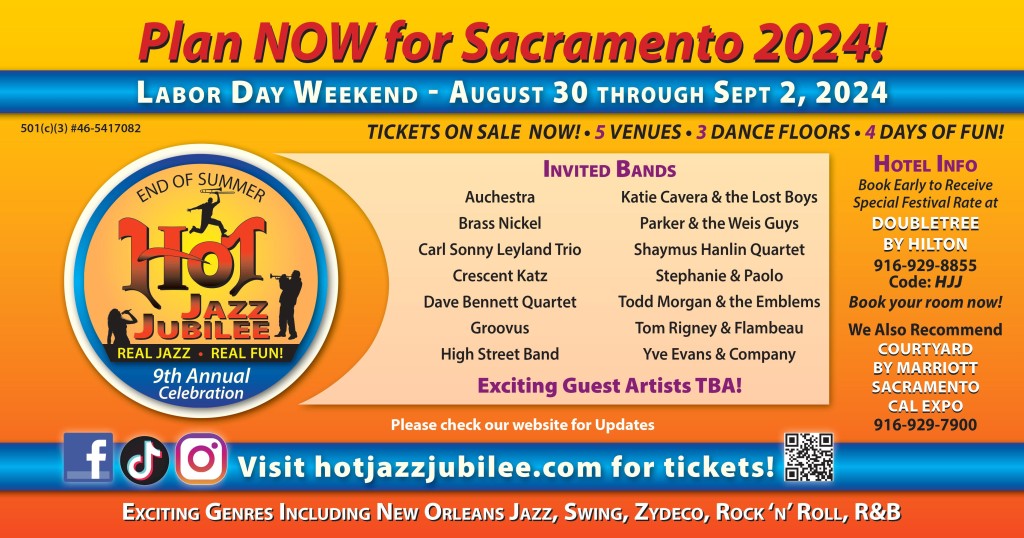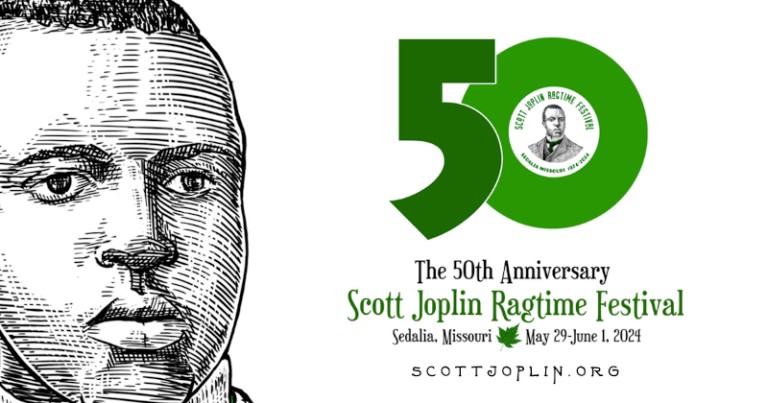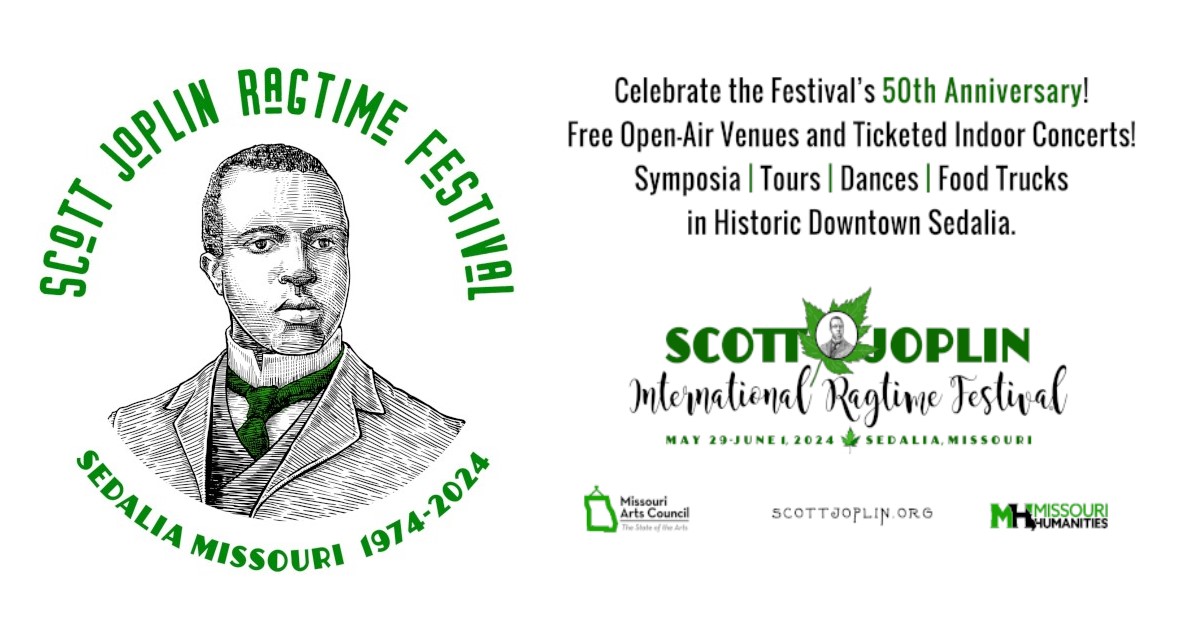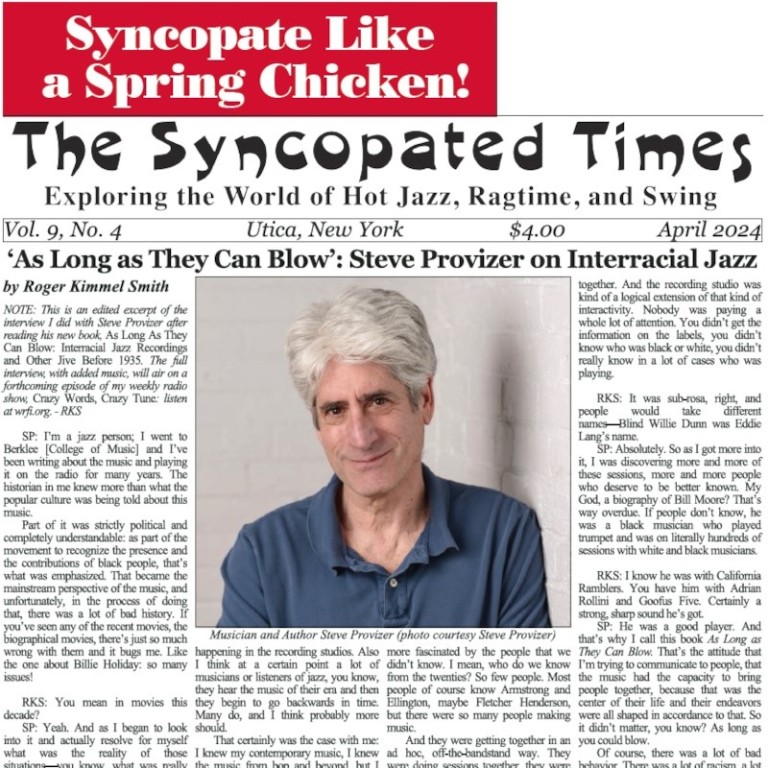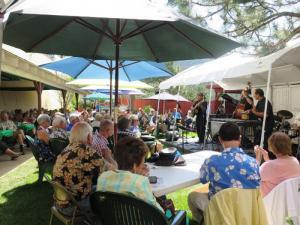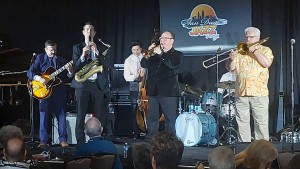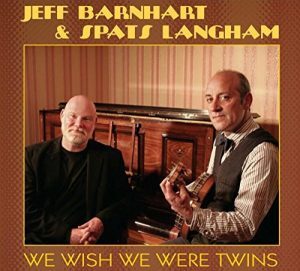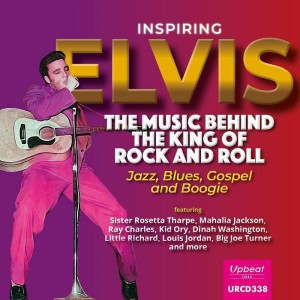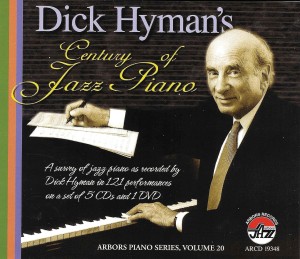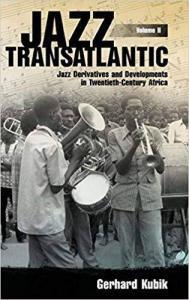 Volume I of this two-part series followed the African roots of jazz across the Atlantic. (Read our review here.) It covered the knowable history with linguistic and musical analysis at a depth that no one but Gerhard Kubik could have reached. Calling on his 60 years at the forefront of jazz studies in Africa, he carefully avoids exaggerated claims of provenance and always respects the individual musicians whose efforts lie behind any music. Even when their names are lost to history he avoids the misleading trap of ascribing a music to a culture as if it sprung from the earth. Volume I gets far enough in the story to see music of the Americas finding its way back to Africa in the form of Calypso, Negro Spirituals, and traveling minstrel shows.
Volume I of this two-part series followed the African roots of jazz across the Atlantic. (Read our review here.) It covered the knowable history with linguistic and musical analysis at a depth that no one but Gerhard Kubik could have reached. Calling on his 60 years at the forefront of jazz studies in Africa, he carefully avoids exaggerated claims of provenance and always respects the individual musicians whose efforts lie behind any music. Even when their names are lost to history he avoids the misleading trap of ascribing a music to a culture as if it sprung from the earth. Volume I gets far enough in the story to see music of the Americas finding its way back to Africa in the form of Calypso, Negro Spirituals, and traveling minstrel shows.
He continues that journey in Volume II by detailing the influence of jazz in Africa across the arc of the 20th century, most prominently in the period after de-colonialization.
Once again he makes no exaggerated claims. The first section of the book is an overview of the modern presence of jazz on the African scene, and a ready admission that it is minimal. The local popular musics that attach the word “jazz” to a band name or description use it for cachet and show little or no jazz influence. They use it the way someone may cast the terms “pop” or “rock” too broadly. Small highly educated communities and individual urban clubs with ties to international institutions honor jazz, and host musicians from abroad, but he doesn’t waste time grasping at these straws.
Instead, he finds the jazz roots of several forms of popular music in Africa and follows them forward as long as the path leads. He also finds intriguing parallels between early American jazz and music growing out of similar social conditions in Africa. A chapter is dedicated to brass band culture which, through colonialization, produced in cities across the continent sounds similar, but slightly different and even more inflected by poly-rhythms, than what was happening in New Orleans. These locally distinct brass band cultures continue to the present day. Most interesting to me were the of brass band parades in Freetown South Africa, complete with New Orleans style second liners, that were held every Sunday into the 1980s.
He also traces the parallel growth of “Fife and Drum” bands in rural Africa that are rooted in colonial militarism and have parallels in the Americas. Some of these musical responses to history are, 150 years later, mistaken for ancient “folk” music.
He finds another fascinating parallel to the Crescent City. In the decades before jazz “spasm” bands were common on the streets of New Orleans. These groups of children played cheap and sometimes homemade instruments. Not knowing how to read music they were forced to invent it. In the process, they gained a talent for ensemble improvisation that would become the hallmark of jazz.
In Africa, from around the 1940s and continuing to the present day, similar bands of youth, facing similar economic conditions, have been doing the same. The play homemade banjos and guitars, acquire cheap pennywhistles and do their best to entertain passing crowds while emulating musicians they admire. Kubik traces one form of this music, Kwela, from a time when it was jazz saxophonists they were trying to emulate, through its brief international popularity in the late 50s, and into the decline of local support in the face of Rock and Roll.
The European influence is never ignored, indeed as much as the first book was about African music wedding European music in America, this book is about European music, along with that of the Americas, making a return. After documenting the introduction of western instruments by way of martial music he then follows big band and other jazz-influenced music, the standard western popular music of the time, as it gains hold in Africa. The same 78 RPM records for sale in America found followings around the world. Bands formed to meet the demand for western style dancing and gave it a local flavor. In Ghana “High Life” developed and inspired many contemporary jazz fusions to follow.
The last part of the book follows developments in South Africa, where serious jazz took root deeper and longer than it did in other parts of the continent. The Post-Bop period is chronicled through a series of artist profiles rather than a vague outline. His in-depth technical analysis finds many parallels between modern jazz forms and elements of various traditional music in Africa. Sometimes these were intentionally drawn on by the artist and sometimes not.
References are given to dozens of local styles that reward the listener upon further investigation. In many cases he mentions individual CDs that can be sought out. It is a book to be digested slowly and used as a reference.
This is a very serious academic work targeted at advanced students of music. It will be challenging for many readers, but unlike Volume I, there are no extended sections where an understanding of music theory is required. I close with the following excerpt as an example, it could serve as a thesis statement for the whole project. If you find this idea compelling it may be a book for you:
“These ‘cross-cousins’ of early jazz arose from analogous stimuli within contemporaneous socio-psychological environments and situations conducive to a musical process. The studies of these analogies across the Atlantic can, therefore, help us unravel deep structures in the reactions shared by Africans and African-Americans at the turn of the nineteenth/ twentieth centuries in their encounters with then fashionable European-derived musical forms, which they tried to emulate but eventually processed into something else.” pg. 63
Jazz Transatlantic, Volume II: Jazz Derivatives and Developments in Twentieth-Century Africa
By Gerhard Kubik 272 pages (approx.), 6 1/8 x 9 1/4 inches, 68 b&w illustrations, bibliography, index, 9781496806086 Printed casebinding $75.00
